Dominique Luchart's Blog, page 616
May 22, 2021
Aerion Supersonic, which planned to make silent, fast business jets, is shutting down, Kim Lyons

 Flying off into the sunset | Aerion
Flying off into the sunset | AerionAerion Supersonic, which had plans to build silent business jets that would travel twice as fast as most commercial airplanes, is shutting down operations. First reported by Florida Today, Aerion, which had backing from Boeing, said it was unable to raise the money to build its AS2 supersonic jet.
“The AS2 supersonic business jet program meets all market, technical, regulatory and sustainability requirements and the market for a new supersonic segment of general aviation has been validated with $11.2 billion in sales backlog for the AS2,” the company said in an statement emailed to The Verge on Saturday.
“However, in the current financial environment, it has proven hugely challenging to close on the scheduled and necessary large new…
The post Aerion Supersonic, which planned to make silent, fast business jets, is shutting down, Kim Lyons appeared first on NEWDAWN Blog.
Chinese startup Pony.ai gets approval to test driverless vehicles in California, Kim Lyons

 Getty Images
Getty ImagesChinese autonomous vehicle startup Pony.ai has received a permit from California’s Department of Motor Vehicles to test its driverless cars without human safety drivers behind the wheel on specified streets in three cities.
Pony has been authorized to test autonomous vehicles with safety drivers in California since 2017, but the new permit will let it test six autonomous vehicles without safety drivers on specific streets in Fremont, Alameda County; Milpitas, Santa Clara County; and Irvine, Orange County. According to the DMV, the vehicles are designed to be driven on roads with speed limits of 45 miles per hour or less, in clear weather and light precipitation. The first testing will be in Fremont and Milpitas on weekdays between 10AM…
The post Chinese startup Pony.ai gets approval to test driverless vehicles in California, Kim Lyons appeared first on NEWDAWN Blog.
Chinese startup Pony.ai gets approval to test driverless vehicles in California,

Chinese autonomous vehicle startup Pony.ai has received a permit from California’s Department of Motor Vehicles to test its driverless cars without human safety drivers behind the wheel on specified streets in three cities.
Pony has been authorized to test autonomous vehicles with safety drivers in California since 2017, but the new permit will let it test six autonomous vehicles without safety drivers on specific streets in Fremont, Alameda County; Milpitas, Santa Clara County; and Irvine, Orange County. According to the DMV, the vehicles are designed to be driven on roads with speed limits of 45 miles per hour or less, in clear weather and light precipitation. The first testing will be in Fremont and Milpitas on weekdays between 10AM and 3PM.
A total of 55 companies have active permits to test driverless vehicles in California according to the DMV, but Pony is only the eighth company to receive a driverless testing permit, joining fellow Chinese companies AutoX, Baidu, and WeRide, along with US companies Cruise, Nuro, Waymo, and Zoox. Nuro is the only company so far to receive a deployment permit that allows it to operate its autonomous vehicles in California commercially.
Pony.ai, which is based in Guangzhou and Silicon Valley, was valued at $3 billion after a $400 million investment from Toyota last year. The company said earlier this month its robotaxis will be ready for customers in 2023. Pony claims it’s the first company to launch autonomous ride-hailing and provide self-driving car rides to the general public in China.
The post Chinese startup Pony.ai gets approval to test driverless vehicles in California, appeared first on NEWDAWN Blog.
Virgin Galactic spaceplane VSS Unity completes successful flight, Kim Lyons
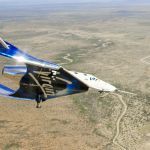 [image error]Virgin Galactic’s VSS Unity gliding home during a previous test flight | Image: Virgin Galactic
[image error]Virgin Galactic’s VSS Unity gliding home during a previous test flight | Image: Virgin GalacticVirgin Galactic completed its first successful space flight in more than two years on Saturday, with its crewed VSS Unity spacecraft carried to an altitude of more than 44,000 feet before gliding safely back to Earth.
Virgin’s VMS Eve carrier aircraft took off from Spaceport America in New Mexico at about 10:35AM ET with Unity aboard. About 10 minutes before its release, Unity switched to its own battery power, and conducted flight control and electrical checks. Once released by Eve, Unity’s pilots C.J. Sturckow and Dave Mackay ignited the rocket motor, then shut it down a few minutes later, with the spacecraft’s momentum keeping it traveling toward its apogee, or highest point.
Unity reached apogee at about 11:30AM ET, did a slow…
The post Virgin Galactic spaceplane VSS Unity completes successful flight, Kim Lyons appeared first on NEWDAWN Blog.
Virgin Galactic spaceplane VSS Unity completes successful flight,
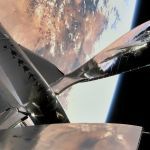
Virgin Galactic completed its first successful space flight in more than two years on Saturday, with its crewed VSS Unity spacecraft carried to an altitude of more than 44,000 feet before gliding safely back to Earth. It marked the first spaceflight from New Mexico, making it the third US state to launch humans into space. The Zia sun symbol of New Mexico’s state flag was displayed on the outside of the ship.
Virgin’s VMS Eve carrier aircraft took off from Spaceport America in New Mexico at about 10:35AM ET with Unity aboard. About 10 minutes before its release, Unity switched to its own battery power, and conducted flight control and electrical checks. Once released by Eve, Unity’s pilots C.J. Sturckow and Dave Mackay ignited the rocket motor, then shut it down a few minutes later, with the spacecraft’s momentum keeping it traveling toward its apogee, or highest point.
Unity reached a speed of Mach 3 after it was released from Eve, and reached space at an altitude of 55.45 miles. It reached apogee at about 11:30AM ET, did a slow turn, then glided back into Earth’s atmosphere, landing at about 11:43 AM ET on the same Spaceport America runway where its flight began.
Today’s view: Infinite. #Unity21 made a beautiful ascent to apogee over Spaceport America, New Mexico. #VirginGalactic pic.twitter.com/jphjbMbSr2
— Virgin Galactic (@virgingalactic)
“Today’s flight showcased the inherent elegance and safety of our spaceflight system, while marking a major step forward for both Virgin Galactic and human spaceflight in New Mexico,” Virgin Galactic CEO Michael Colglazier said in a statement Saturday after Unity and Eve were back on the ground. “We will immediately begin processing the data gained from this successful test flight, and we look forward to sharing news on our next planned milestone.”
Saturday’s flight, which also carried research payloads for NASA’s Flight Opportunities program, is the latest step toward Virgin Galactic’s goal of a space tourism program. The company has some 600 reservations for tickets on future space flights, which go for around $250,000 each. Unity is able to carry up to six passengers and two pilots.
It was Virgin Galactic’s first space flight since 2019, and the third one it’s completed. Unity’s first two flights, in late 2018 and early 2019, were conducted at the company’s test facility at the Mojave Air and Spaceport out of California. Virgin Galactic later moved its operations to Spaceport America, where it plans to conduct all of its commercial tourist flights. The company had to abort its first flight attempt at the new facility in December, after Unity’s engine cut out early ahead of its glide back to Earth.
Virgin Galactic said in February, and confirmed during its May 10th earnings call, that it has a total of four spaceflights planned this year. The next one is slated to have two pilots and four Virgin Galactic employees as passengers, and a third flight is scheduled to have Virgin founder Richard Branson on board. Flight four is intended to be a commercial flight for the Italian Air Force, which should generate $2 million in revenue.
Saturday’s flight was the 400th commercial space launch licensed by the FAA. The dates for the future Unity flights are still to be announced.
Update May 22nd 2:17PM ET: Adds details from Virgin Galactic about the flight
The post Virgin Galactic spaceplane VSS Unity completes successful flight, appeared first on NEWDAWN Blog.
Virgin Galactic launches 1st SpaceShipTwo spaceflight from New Mexico, ,
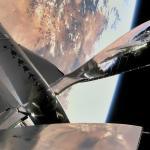
Virgin Galactic launched its first SpaceShipTwo suborbital spaceflight from New Mexico Saturday (May 22) in a big leap forward toward commercial launches.
The post Virgin Galactic launches 1st SpaceShipTwo spaceflight from New Mexico, , appeared first on NEWDAWN Blog.
Apple says HomePod and HomePod Mini will support lossless audio after future update,

In a new support document on its website, Apple dives a little deeper into the details around the upcoming launch of lossless audio on Apple Music.
Apple now says that both the HomePod and HomePod Mini will support lossless audio after a future software update. That’ll be good news to people who’ve invested in one or a pair of Apple’s smart speakers. Two HomePods grouped in stereo playing a lossless source? Yeah, that’s going to sound wonderful. Apple isn’t yet giving any timetable for when this software update will be released, however.
The document also clarifies that the Apple TV 4K will only support standard lossless audio when the ALAC files become available in June. Apple has said that in most cases, the “Hi-Res Lossless” tier will require external devices like a USB DAC.
Apple uses the document to tout its “commitment” to providing customers with the best possible listening experience. It talks up both AAC — claiming that the format has become “virtually indistinguishable from the original studio recording” as encoding methods have evolved — and its Apple Digital Masters initiative. I continue to think that Apple is much more excited about spatial audio and Dolby Atmos mixes coming to Apple Music than anything to do with lossless itself.
The document also reiterates what Apple told The Verge earlier this week in regards to the AirPods Max: when listening to audio via the Lightning-to-3.5mm cable, the company says it’ll sound fantastic, but it won’t technically be “lossless” due to an analog to digital conversion that occurs in the cable. Apple again confirms that lossless quality will be exclusive to Apple Music:
Can I redownload my iTunes purchases in lossless?
If you subscribe to Apple Music, you can redownload music in lossless only from the Apple Music catalog.
The straightforward answer to the question as written is really a flat “no,” but obviously Apple wants to nudge people towards its subscription service. Apple Music will offer over 20 million songs in lossless quality at launch in June, and that total will reach over 75 million by the end of 2021.
The post Apple says HomePod and HomePod Mini will support lossless audio after future update, appeared first on NEWDAWN Blog.
May 21, 2021
Apple’s excuse for no AirTag in Siri Remote: it’s too thick to easily lose in your couch,
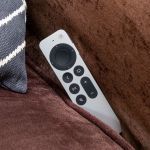
We have poked a considerable amount of fun at the Apple TV’s Siri Remote over the years, and we’re pleased to say it’s finally fixed — except for the headsmacking decision not to stick the company’s AirTag UWB locator technology into one of the few gadgets absolutely, positively guaranteed to get lost in your couch cushions someday. Why?
Today, Apple VP Tim Twerdahl answered that burning question in perhaps the most unsatisfactory way imaginable: simply, that the new TV remote’s thick enough you shouldn’t need to worry about that much anymore.
Here’s the whole exchange between Twerdahl and MobileSyrup’s Patrick O’Rourke:
Q: Was there ever any thought to adding some sort of AirTag-like technology in the Siri remote? I’m always losing the remote in my couch cushions and it seems like it would be a great idea. Did Apple not bother because the ‘Find My’ network is more designed for use outside of the home?
Twerdahl: We are super excited about AirTags and what we’re doing with U1, and part of that power is the Find My network and the fact that we can leverage a billion devices around the world to help you find stuff. To your point, that is the most powerful out of the home. With the changes we’ve made to the Siri Remote — including making it a bit thicker so it won’t fall in your couch cushions as much — that need to have all these other network devices find it seems a little bit lower.
I would have perhaps bought “we tried it and it drained the battery too quickly” or “we finalized the Siri Remote before AirTags were ready” or even “it cost too much to hit our target price.”
But thickness? My Roku remotes got swallowed by my couch cushions plenty, and those thick suckers had AA batteries and full-size headphone jacks inside.
My colleague Chris Welch says Apple’s right about one thing, though — compared to the original Siri Remote’s thinness, it’s an improvement where couches are concerned.
The post Apple’s excuse for no AirTag in Siri Remote: it’s too thick to easily lose in your couch, appeared first on NEWDAWN Blog.
Apple’s excuse for no AirTag in Siri Remote: it’s too thick to easily lose in your couch, Sean Hollister
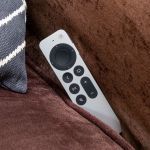
 Photo by Chris Welch / The Verge
Photo by Chris Welch / The VergeWe have poked a considerable amount of fun at the Apple TV’s Siri Remote over the years, and we’re pleased to say it’s finally fixed — except for the headsmacking decision not to stick the company’s AirTag UWB locator technology into one of the few gadgets absolutely, positively guaranteed to get lost in your couch cushions someday. Why?
Today, Apple VP Tim Twerdahl answered that burning question in perhaps the most unsatisfactory way imaginable: simply, that the new TV remote’s thick enough you shouldn’t need to worry about that much anymore.
Here’s the whole exchange between Twerdahl and MobileSyrup’s Patrick O’Rourke:
Q: Was there ever any thought to adding some sort of AirTag-like technology in the Siri remote? I’m always losing the…
The post Apple’s excuse for no AirTag in Siri Remote: it’s too thick to easily lose in your couch, Sean Hollister appeared first on NEWDAWN Blog.
A 20-year-old Xbox Easter egg has been revealed, and there may still be more,

Kotaku has revealed an Easter egg that’s been hidden on the original Xbox for almost twenty years, after a developer who worked on the console sent in a tip. The Easter egg, which has apparently remained secret until now, can show you the Xbox Dashboard Team’s names after you follow a byzantine set of steps (as is par for the course when it comes to some video game secrets).
Kotaku was able to find someone with a working Xbox who could actually carry out those steps, which you can see in the publication’s video below. If you’ve got one of the consoles, you can try it out for yourself by ripping a CD as a soundtrack and calling it “Timmyyyyyyyyyyyyyyyyyyyyyyyyyy!” (using 26 “y”s to reach the maximum amount of characters allowed). After the rip is complete, going to the Xbox’s Settings > System Info screen will instead display the names of the people who worked on the dashboard.
[embedded content]The Easter egg is similar to another one that exists on Microsoft’s original console, where naming a soundtrack rip “<>” will immediately play credits thanking the console’s development partners and players.
Developers hiding their names in games and consoles is nothing new. In fact, it’s widely believed that the first video game Easter egg was created by a developer trying to get their name into their game. As the story goes, developer Warren Robinett hid his name in the 1980 game Adventure after Atari refused to give him credit.
Modern consoles also like to incorporate various winks and nods to gaming culture as well — the PS5 has PlayStation’s iconic circle, triangle, square, cross symbols molded into some of its plastic, and this Fisher-Price gamepad for literal babies incorporates the famous Konami Code.
Despite gamers being ever-vigilant for hidden secrets, it seems as if there’s still at least one hiding somewhere in the Xbox. As Kotaku points out, Seamus Blackley, the creator and designer of the Xbox tweeted in 2017 that there was still a hidden secret that no one had found. But the one revealed Friday wasn’t what he was referring to, he told Kotaku:
Thankfully, Blackley was kind enough to respond to a few queries about all of this. He confirmed that yes, the Xbox Easter egg he has in mind does in fact revolve around the Xbox’s boot animation, and is not the “Timmy” secret we’re revealing today–which he actually didn’t know about.
It seems the egg hunt can continue on for fans of the ancient console.
The post A 20-year-old Xbox Easter egg has been revealed, and there may still be more, appeared first on NEWDAWN Blog.



